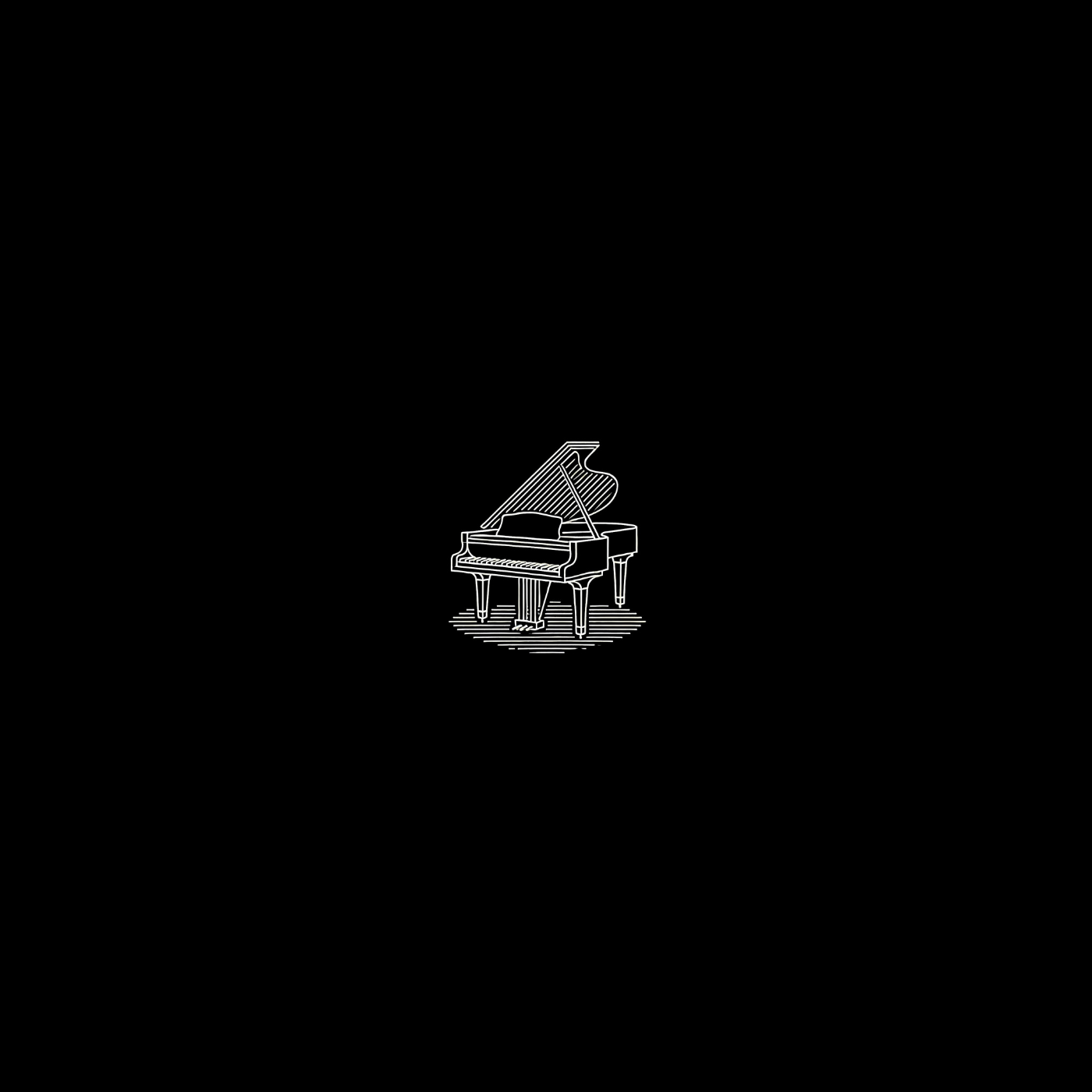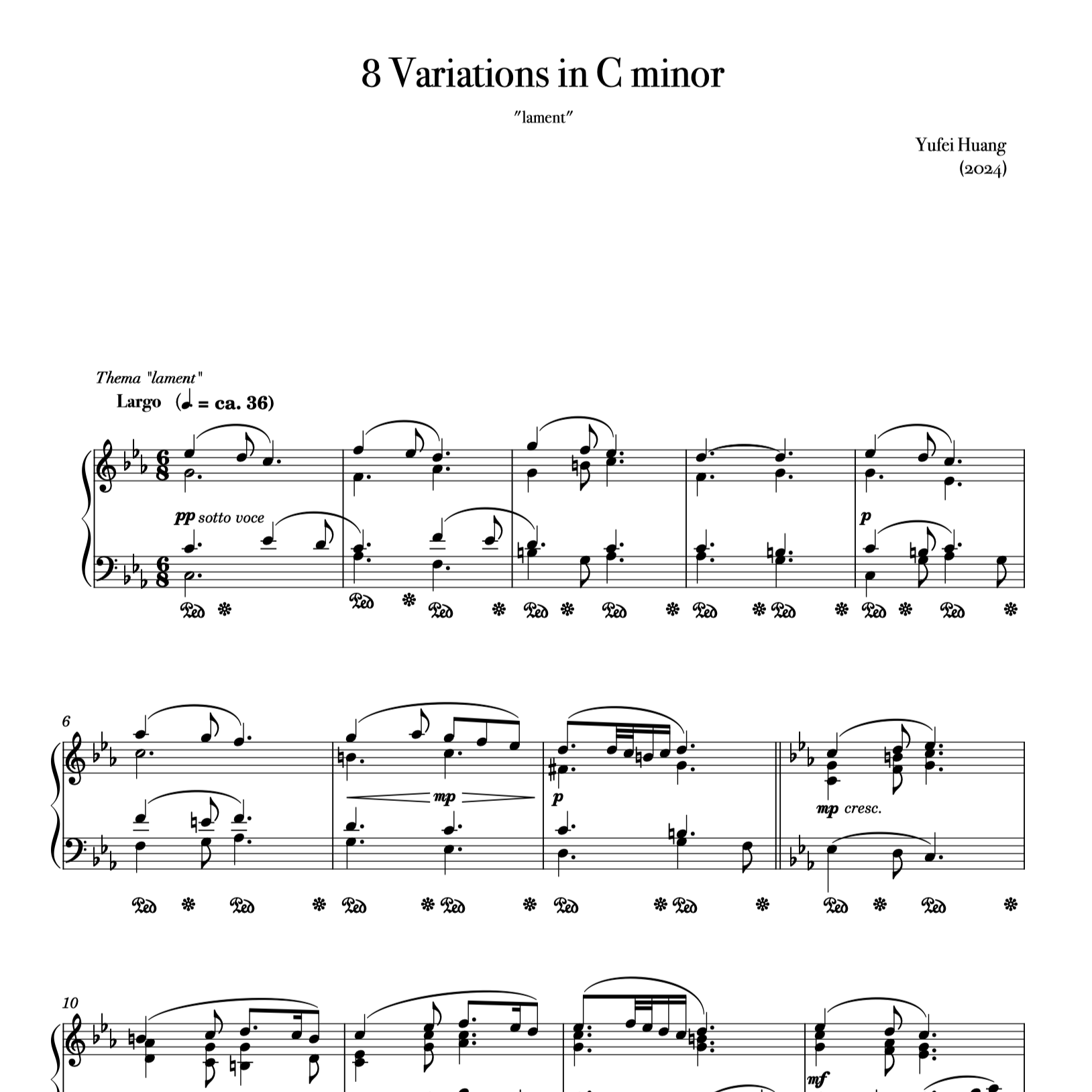

8 Variations in C minor, YH.1
8 Variations in C minor, YH.1 (2024)
The piece is built upon a chorale-style four-part harmony in binary form.
Variation I: “Clockwork” - C minor
The harmony is expanded with arpeggios of chord tones in the alto, accompanied by a G drone to evoke the ticking of a mechanical clock, setting a time-traveling mood.
Variation II: “Divinity” - C minor
In the style of an invention, this variation extends the theme through counterpoint, forming a call-and-response dialogue.
Variation III: “Knight” - A minor
The theme is lengthened, with the left hand in motion through extensive use of passing tones, appoggiaturas, and embellishing tones. The roles of the hands reverse in the second half.
Variation IV: “Fate’s Tapestry” - A minor
The theme motif is presented mainly in staccato, with harmonic expansion through octaves and the use of embellishing tones and passing tones in both voices.
Variation V: “Serenade” - A minor
Styled after a Venetian barcarolle, the left hand provides a drifting accompaniment, while the right hand interprets the theme in a lyrical, voice-like manner.
Variation VI: “Mazurka” - F major
Rhythmic elements of a Polish mazurka dance, with grace notes added to extend the theme and enhance the dance-like quality.
Variation VII: “Radiance”
The motif is transposed to the whole-tone scale, creating ethereal tension through interwoven thirds and augmented fourths. The thirds are softened, while dissonance is heightened through dynamic shifts and accented diminished fifths.
Variation VIII: “Flame”
A percussive and intense extension of minor harmony, based on harmony axis theory. In the second part, a drone over the Neapolitan chord emphasizes the fiery effect with minor seconds.
8 Variations in C minor, YH.1 (2024)
The piece is built upon a chorale-style four-part harmony in binary form.
Variation I: “Clockwork” - C minor
The harmony is expanded with arpeggios of chord tones in the alto, accompanied by a G drone to evoke the ticking of a mechanical clock, setting a time-traveling mood.
Variation II: “Divinity” - C minor
In the style of an invention, this variation extends the theme through counterpoint, forming a call-and-response dialogue.
Variation III: “Knight” - A minor
The theme is lengthened, with the left hand in motion through extensive use of passing tones, appoggiaturas, and embellishing tones. The roles of the hands reverse in the second half.
Variation IV: “Fate’s Tapestry” - A minor
The theme motif is presented mainly in staccato, with harmonic expansion through octaves and the use of embellishing tones and passing tones in both voices.
Variation V: “Serenade” - A minor
Styled after a Venetian barcarolle, the left hand provides a drifting accompaniment, while the right hand interprets the theme in a lyrical, voice-like manner.
Variation VI: “Mazurka” - F major
Rhythmic elements of a Polish mazurka dance, with grace notes added to extend the theme and enhance the dance-like quality.
Variation VII: “Radiance”
The motif is transposed to the whole-tone scale, creating ethereal tension through interwoven thirds and augmented fourths. The thirds are softened, while dissonance is heightened through dynamic shifts and accented diminished fifths.
Variation VIII: “Flame”
A percussive and intense extension of minor harmony, based on harmony axis theory. In the second part, a drone over the Neapolitan chord emphasizes the fiery effect with minor seconds.